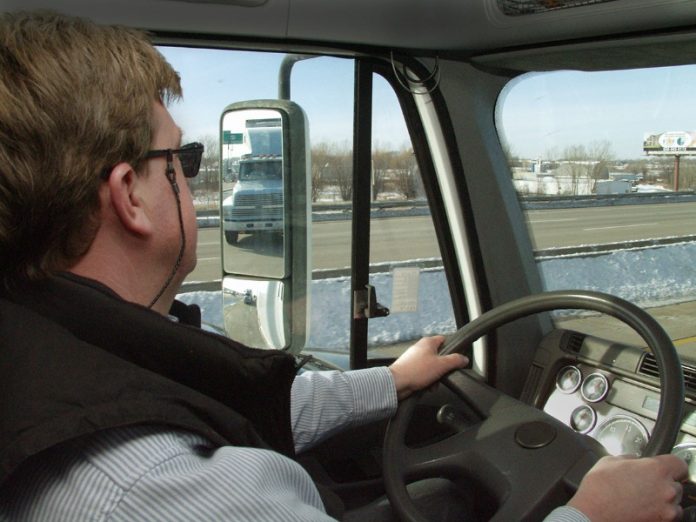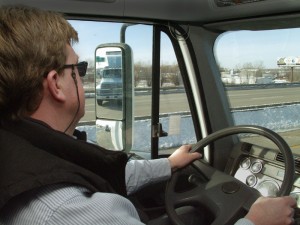In this day and age, there are many communications devices that allow you to instantly contact your drivers. However, some of these devices can lead to an unsafe situation if used improperly. In some cases, it can also lead to a ticket.
The issues with electronic communication systems in vehicles have been well studied and the dangers well documented. The problems are “glances” and “attention to task.” When the driver is interacting with the communications device, the driver is not “watching traffic” (called a visual distraction), is not listening to what is going on around him/her (called an auditory distraction), is attempting to manually manipulate the device (called a manual distraction) and is not thinking about driving (referred to as a cognitive distraction).
The more types of distraction a device causes, the greater the risk is when using it while driving. Texting, which involves all four types of distraction, has long been recognized as the most dangerous of the electronic distractions. In one study, texting was found to increase the odds of the driver being involved in a safety-related event or crash by 23 times. There are many activities that carry the same level of risk for the same reason — they involve multiple types of distraction at the same time — such as dialing a cell phone when driving or using a computer terminal while driving.
Due to the dangers involved in electronic distraction, the Federal Motor Carriers Safety Administration (FMCSA) and many states have placed rules on the books limiting the use of cell phones and prohibiting texting while driving. By the way, “while driving” includes while stopped at a stop light or stop sign, and being stuck in traffic. To be “not driving,” the driver needs to be stopped and safely parked in a legal parking place.
Cell phones
The FMCSA and state cell phone regulations are such that a driver can use a cell phone while driving provided certain conditions are met. First, the phone cannot be held in the driver’s hand. It must be “hands free.” The hands-free requirement applies to everything from dialing to hanging up. Dialing andhanging up must be able to be accomplished with “one touch.”
Second, the driver must be able to answer or initiate calls while seated normally in the driver’s seat. If the driver has to reach in such a way that he/she has to “leave the driving position” to initiate or answer a call, the driver is in violation of the regulations.
The driver does have the option to get off of the roadway (park somewhere where it is legal and safe to park) and use the cell phone, if hands-free is not an option.
The only exception to the rules is if the driver needs to contact emergency services to report an emergency.
Basically, what is prohibited by the FMCSA (and most states and municipalities that have cell phone rules) is the driver holding the phone, dialing the phone, or having to leave the driving position to initiate or answer a call. If the driver has a hands-free headset or a “smart” vehicle that can link to the phone, then the driver can make and answer cell phone calls.
As a company, if you want to have “instant access” to your drivers using cell phones, you will need tomake sure that the drivers understand the rules and are equipped with hands-free technology. Otherwise, the drivers need to be told to let the call go to voicemail, and stop as soon as safely possible to check the voicemail.
Texting
The FMCSA regulations (as well as most state and municipal rules that restrict texting) prohibit “manual entering of alpha-numeric characters into a communication device or reading of alpha-numeric information on a communication device” while driving. This is the technical definition of “texting.” Unlike the cell phone regulation, the regulations do not provide an alternate means of texting that would be legal. The only way texting when driving can be done legally is if it can be done hands-free (such as using a smart vehicle system that has “voice to text”).
If the driver receives a text when driving, the driver needs to know to find a safe place to park to read and reply to the text. As a company, if you use a text-based system to communicate with your drivers, you need to understand that there will be a delay in the driver’s reply. This is due to the driver needing to find a safe place to read and reply. Anytime a driver that is supposed to be driving replies immediately, you should be concerned that the driver is texting while driving. This suspicion should at least warrant a conversation with the driver to verify that he/she understands and is following the rules.
These regulations (like the cell phone regulations) include an exception for contacting emergency services to report an emergency.
Just because you can, doesn’t mean you should!
There are circumstances in which the driver really should not be using a cell phone, even if it is hands-free.The issue is that cell phones, even hands-free cell phones, create cognitive distraction. This cognitive distraction may lead to the driver seeing something in front of him/her, but not reacting to it.The driver will be especially prone to these phenomena when there are multiple driving activities thatwill require his/her attention.
An example would be a driver approaching an accident scene. Approaching an accident scene requires covering the brake, checking traffic in the area, checking mirrors to see what traffic coming to the sceneis doing, following the directions of emergency responders, being prepared to stop on a moment’s notice, and actively deciding when and where to stop. A driver that is on the phone may not realize what is going on around him/her, much less be mentally prepared and able to make sound decisions.
Other situations, such as heavy traffic, bad road conditions, and bad weather conditions, can lead to similar problems. If the driver is in a driving situation that involves taking in a lot of driving data and making sound decisions, the driver should not be using even a hands-free cell phone.
The bottom line is that when the driver is in a difficult driving situation, the distraction of talking on even a hands-free cell phone may be enough to get the driver in trouble. Therefore, work with your drivers on when they should and shouldn’t be using a hands-free cell phone. And remember that there are no circumstances where texting while driving is allowed.
Thomas Bray is Sr. Editor – Transportation Management for J.J. Keller & Associates, Inc. Contact him at transporteditors@jjkeller.com. Also be sure to check out J. J. Keller’s website at www.jjkeller.com.
Copyright 2014 J. J. Keller & Associates, Inc.®
PO Box 368, 3003 Breezewood Lane
Neenah, WI 54957-0368







